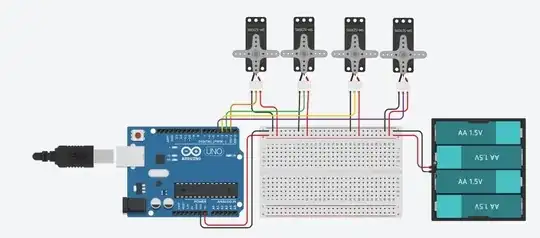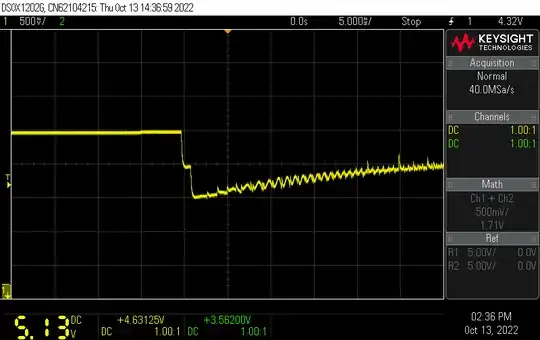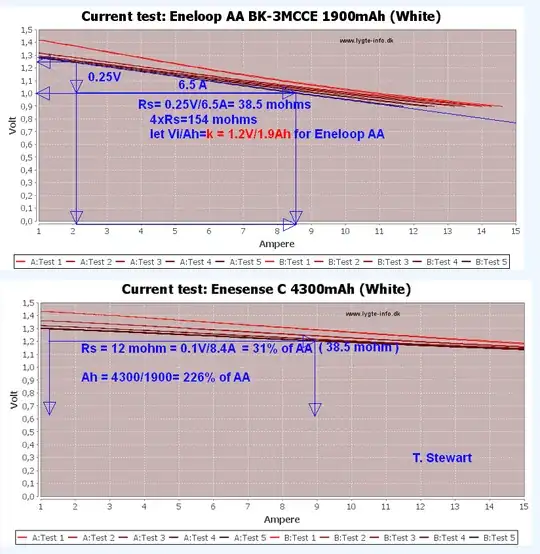I am using a Arduino MKR 1010 Wifi board to control 4 servo (PS-1109MG). All the circuit is powered by 4 AA rechargeable batteries (1.2V * 4). Arduino is powered through the Vin port.
Below is a circuit just to show how they are connected (board type and other details is not correct).

When all the servos move, the arduino's LED oscillates in intensity. I deduced that the servos have a high instantaneous current consumption and the voltage of the batteries drops too much. I measured this with an oscilloscope.
The voltage drops to around 4V when the servos try to move. When the Arduino MKR is powered from the usb port and the servos from the batteries, everything works fine.
How can I reduce the voltage drop on the batteries, to use them as the only power source? Could I use some electrolytic capacitors to reduce the voltage drop?

